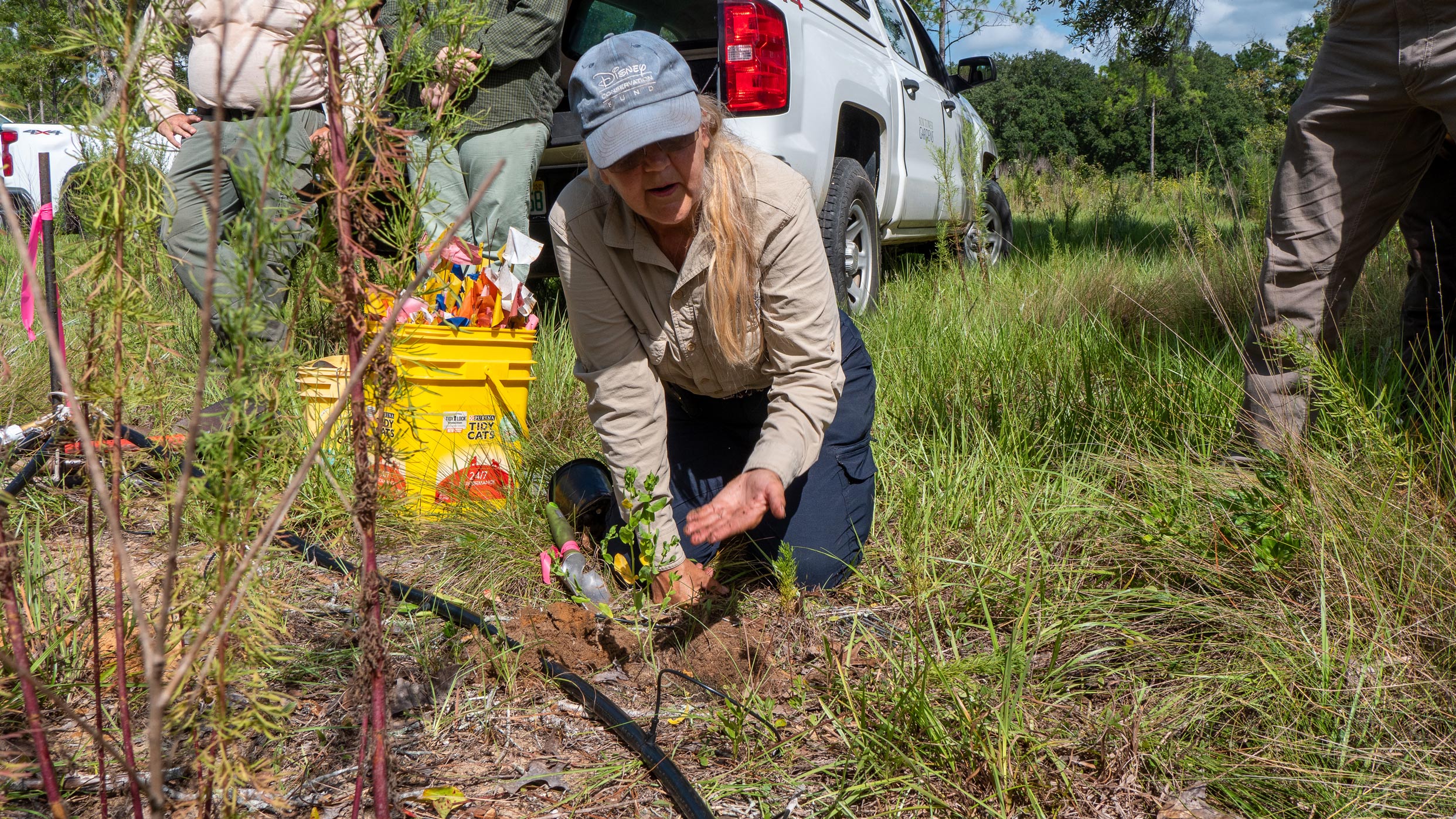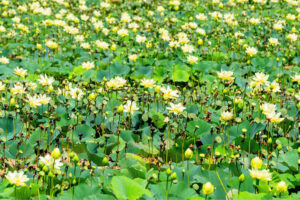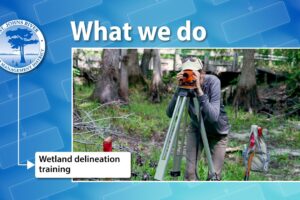District collaborations help save endangered plant species
Aug. 25, 2022
Bok Tower Gardens’ Rare Plant Conservation Program Manager Cheryl Peterson demonstrates for volunteers how to carefully plant seedlings of endangered Clasping warea.
Bok Tower Gardens’ Rare Plant Conservation Program Manager Cheryl Peterson has spent several years collecting seeds from hundreds of small lots and backyards on land slated for development, knowing that some of these populations of the endangered Clasping warea, Warea amplexifolia — an annual in the Brassicacea (mustard and cabbage) family — will likely be lost. She reached out to the St. Johns River Water Management District, seeking a protected place to plant seedlings propagated from nearby plants.
This plant only grows in sandhill habitat along the northern portion of the Lake Wales Ridge, a 150-mile-long ancient sand ridge that runs north-south through central Florida. As sandhill habitat has been converted for agriculture and urban development, Clasping warea became increasingly rare. In 1987, with only three known populations in existence, the U.S. Fish and Wildlife Service (USFWS) added it to the Endangered Species List. Protected land — specifically utility corridors — have helped to support the populations, but plants growing on unprotected land are left vulnerable.
After visiting District property, and knowing the right conditions existed for the seedlings to grow, Peterson reached out to see if a partnership could be formed to protect this species. For the District, it was a no brainer as it helps fulfill one of our core missions of protecting natural systems and allows us to grow our ability to collaborate with other agencies. The exciting day came on July 26 when Marion County land owned by the District became the adopted home of 144 seedlings of the endangered species.
“This is ideal habitat for the warea,” said Peterson, surveying the wiregrass scattered across the sandy landscape of a District conservation area. Ready with trowels and shovels, staff from the Florida Forest Service and volunteers from the Florida Fish and Wildlife Conservation Commission, general public and Alachua Conservation Trust worked alongside Peterson to get the plants in the ground. District Land Manager R.H. Davis and Florida Forest Service biologist Charlie Pederson provided water for the seedlings, pumping water along a temporary irrigation line. These plants will be watered twice a week for the next few weeks. Funding for the project came from USFWS.
Though only about the size of half a basketball court, this planting could start a new population. By fall, the seedlings will mature and flower, forming a pink-colored globular cluster, before going to seed. These original plants will die soon afterward because this species is an annual, but Peterson estimates there will be 100,000 or more seeds released from this planting. The seeds fall below the plants and seed viability is expected to be high, as much as 60–80 percent. She will revisit the site in the fall to check on the reproductive output of the new population. By that time, the District can continue regular habitat work in the area, including the application of prescribed fire, an integral tool that both wiregrass and these endangered wildflowers need to thrive.






